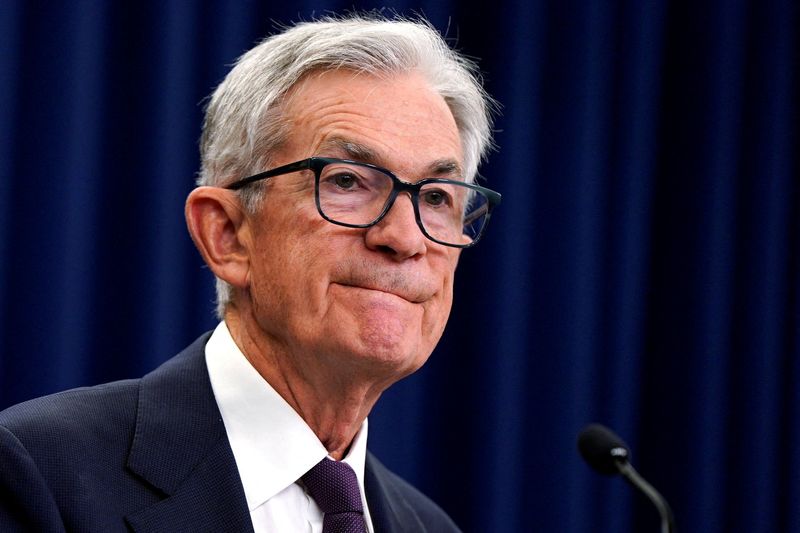Fed’s Powell explains how central bank moderate rates mandate works
By Michael S. Derby
(Reuters) -Federal Reserve Chair Jerome Powell on Wednesday explained why the three missions Congress imposed on the central bank add up to two in real-world conditions.
Powell, speaking at a press conference following the latest interest-rate-setting Federal Open Market Committee meeting, was responding to a question about an official directive for the central bank to achieve “moderate long-term interest rates.”
This so-called third mandate has largely gone unremarked on by central bankers, who have instead long framed their mission as a dual-mandate job, with monetary policy focused on keeping inflation low and stable and the job market sustainably strong.
Powell told reporters the third mandate is real but as central bankers see it, derivative of the two better-known goals laid out in the law that set up and directs the central bank.
“We think moderate long-term interest rates are something that will result from stable inflation, low and stable inflation and maximum employment,” Powell said. Fed officials have not in some time thought of the third mandate as something that needs “independent action.”
Powell’s view on long-term rates and the conduct of monetary policy comes in a climate where the central bank’s main policy tool, the federal funds rate, most clearly impacts the cost of short-term borrowing in the U.S. economy.
Fed officials have long flagged the short end as where their main influence is, with longer-term rates moved by a mix of factors, often unrelated to monetary policy. Fed officials also view their ability to influence long-term rates as more limited.
LONG RATES
But against that view, the conduct of monetary policy over the last nearly two decades suggests that story is not always so simple. Since the financial crisis in 2007 the Fed has engaged in two major chapters of large-scale bond buying, also known as quantitative easing, or QE.
The purchases during the crisis and then in the COVID-19 pandemic were driven by two objectives: market stabilization and providing additional stimulus when the federal funds rate was at near-zero levels.
A key way the Fed bond buying worked was to help lower longer-term interest rates, a goal in line with the third mandate. The challenge for the Fed is that it has never been clear how much benefit it got from huge purchases of Treasuries and mortgage bonds. Even so, they did help lower real-world costs for borrowers such as the government and home buyers.
Fed Governor Christopher Waller, speaking in July, said “the idea of QE is to buy longer-duration securities as opposed to short-duration assets. By increasing the demand for long-dated securities, the Fed drives up the price and drives down the yield on those securities.”



Leave a Comment
Your email address will not be published. Required fields are marked *